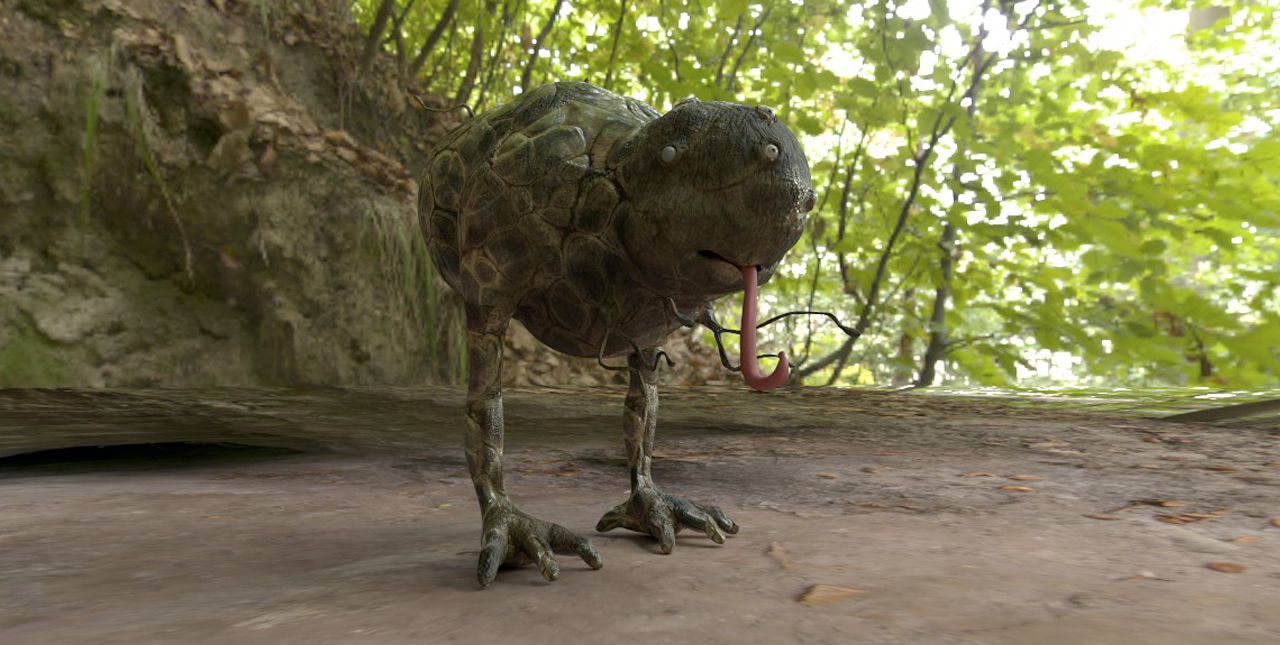What kind of cyborgs do we wanna be?
Elijah van Soldt
We are cyborgs. Not only that, but we’ve been cyborgs for a long time now. The being and becoming of cyborgs is always a work in progress, so we might duly wonder: what kind of cyborgs do we want to be?
Within the (IM)POSSIBLE BODIES festival there are several artists who occupy themselves with this question. They wonder what the ‘new human’ could look like, what moral duties we have with regards to the future, what we can learn from the past for the future and, above all, what does this all look like?
Dutch interdisciplinary design collective Polymorf is working on how a new, different human – or cyborg – will take shape. In their work Symbiosis, we don’t go back to the origin of humanity, but forward to a world destroyed by climate change. In about 200 years, when the world has become uninhabitable for humans, Symbiosis takes place. Here, the human body is redesigned, but how? Will we be human-animals (humanimals?), human-machines, human-animal-machines? Cyborgs, surely, but what kind of cyborgs? Symbiosis is a VR-installation where the visitor is a viewer as well as a participant. Each individual experience contributes to Symbiosis’ the final result.This multisensory VR-installation can be seen in the Kaaihallen.

In the words of posthuman scholar Rosi Braidotti: ‘We are all in this together, but we are not the same.’ Humans, cyborgs; we all share this planet together, but our shared differences must not be forgotten. At macro level alone there’s men, women, and everything in between. Women especially have been an ‘other’ throughout all of history. The baseline for all sorts of things – law, medical sciences, psychology, etc. – is still the man. Therefore, the female cyborg, too, might justly wonder: who do I want to become? Artist Viviane Sassen returns to the surrealists and their cadavre exquis game for answers. Her Augmented Reality (AR) work Consequences (Cadavre Exquis) is an assemblage of floating body parts that enter new connections. It’s not just human body parts, either: animal parts take part in this collage as well. Future cyborgs are not bound to the current female identity; Sassen’s work is an exploration of new forms. Consequences can be seen as part of the AR City Tour through ‘s-Hertogenbosch and is available for online viewing as well.
Artist Rosa Menkman, too, dedicates her work to the role of (cyborg) women throughout history in her movie Pique Nique pour Les Inconnues. We know the women in this movie from commercials, virtual assistants, stock photographs and more, and yet we don’t know who any of them really are. Will this continue in the future? Will hearing the voices of faces that we take for granted always be as shocking as it is in this movie? Or will we at last wholly acknowledge the lives and labour of these cyborg women? Pique Nique pour Les Inconnues can be viewed online.
Of course, women are not the only cyborgs wondering what the future will bring. Everyone is, to some degree, subject to the current technological reality which makes us either hyper- or invisible. The movie Voicing Erasure by the Algorithmic Justice League, to be seen in the virtual environment, also discusses themes of erasure and oblivion. Are machines allowed to erase us? Are companies allowed to take and appropriate our data without our consent? What does this all mean for the future? Algorithmic Justice League founder Joy Buolamwini carries out Voicing Erasure as a poetic piece, dedicated to the champions of women’s emancipation and the forerunning scholars of race, gender and technology.
We don’t know what kind of cyborgs we want to be. During (IM)POSSIBLE BODIES we explore that we are cyborgs, that we’ve been cyborgs for a long time and what kind of cyborgs we’d like to become. Embrace the future with a smile and a tear. Nothing about humanity is foreign to us cyborgs.